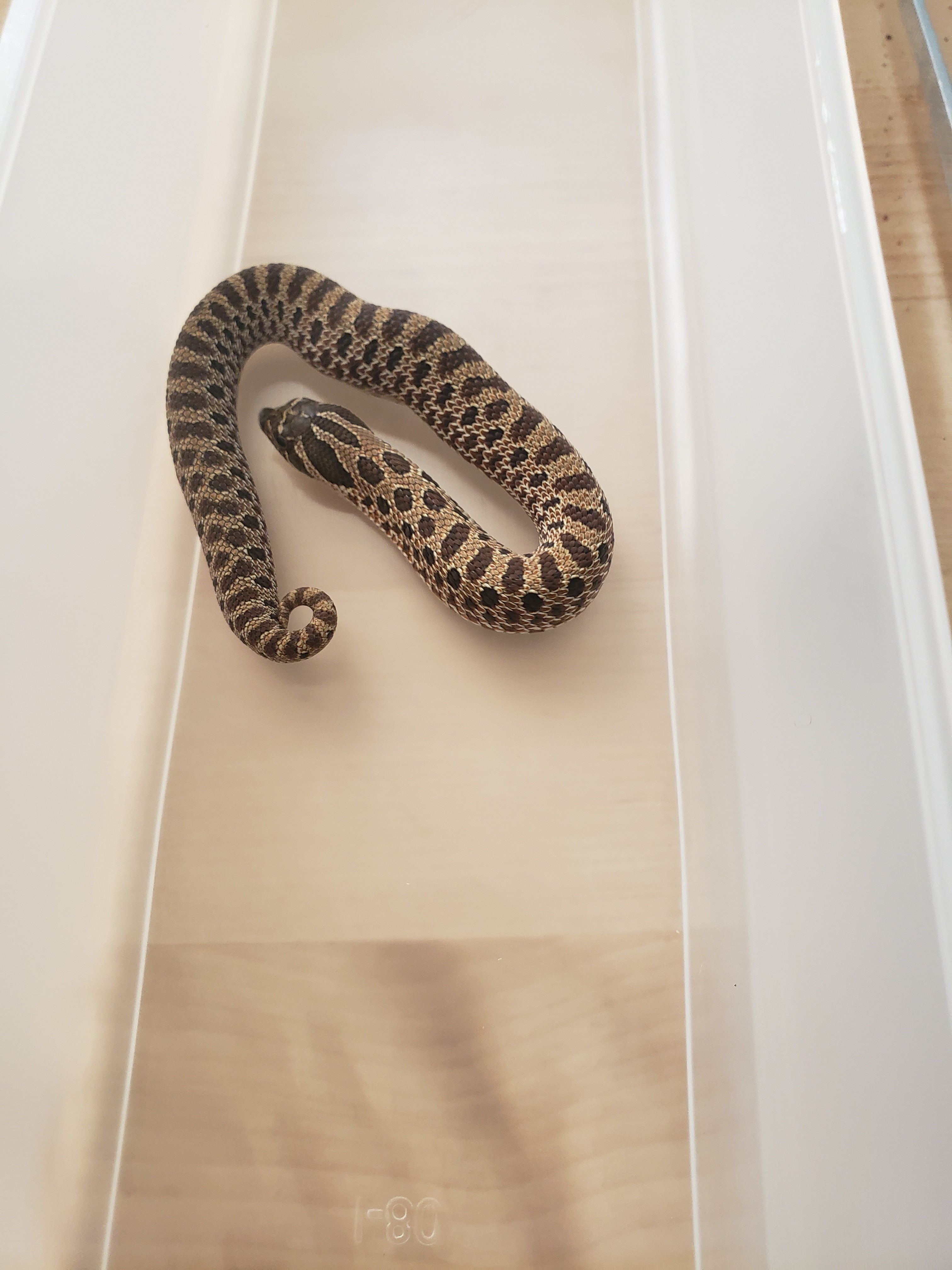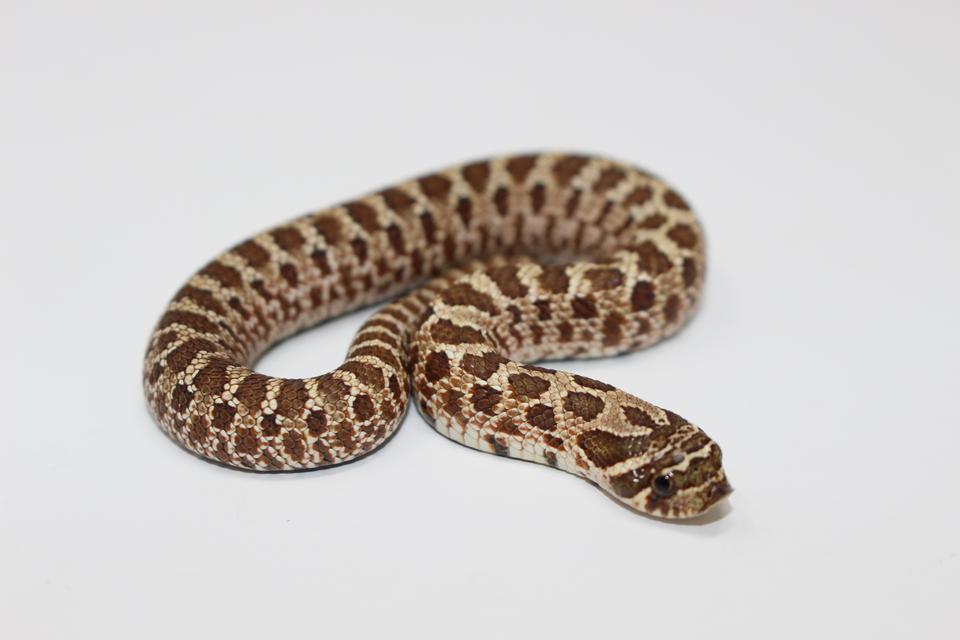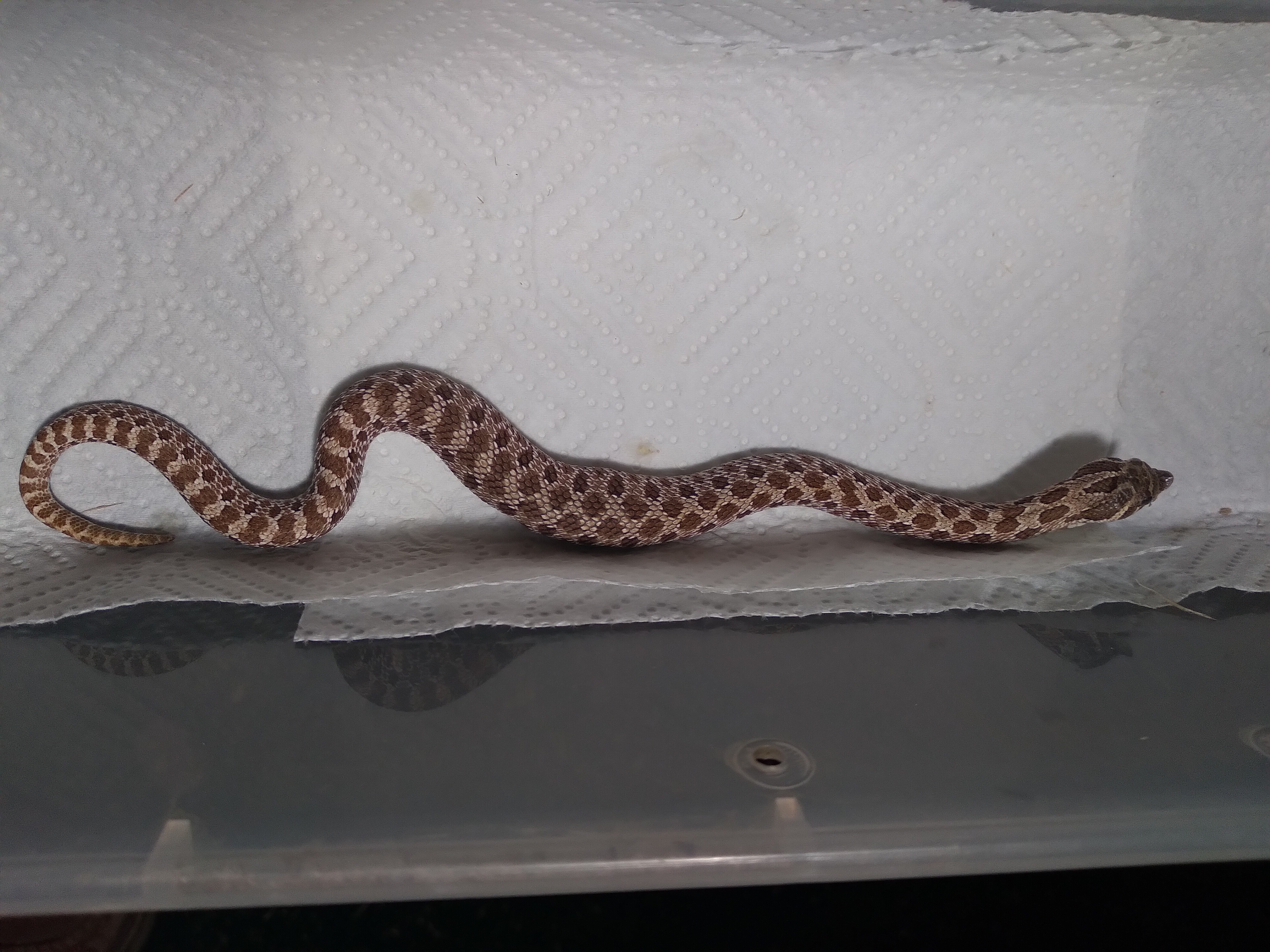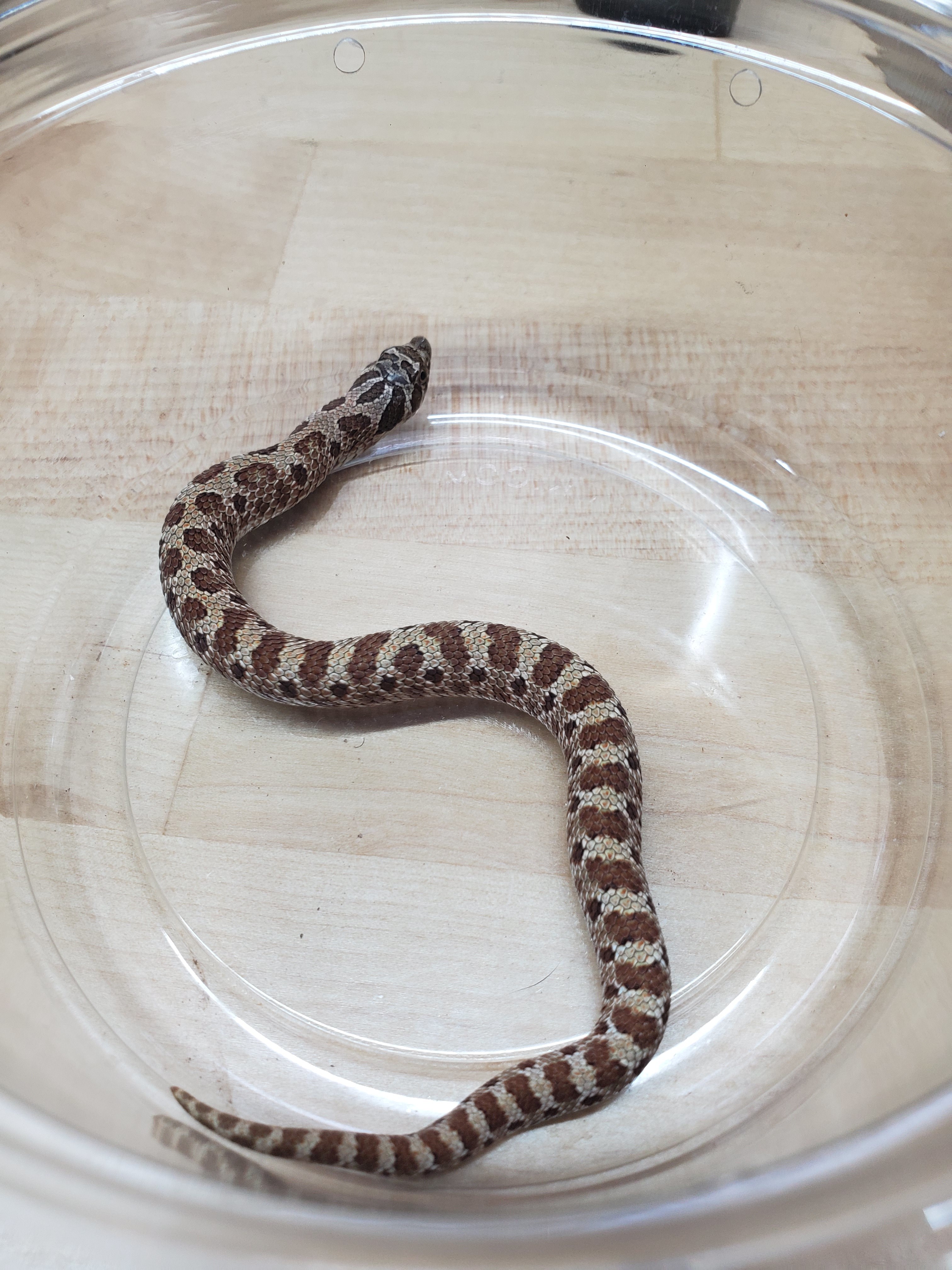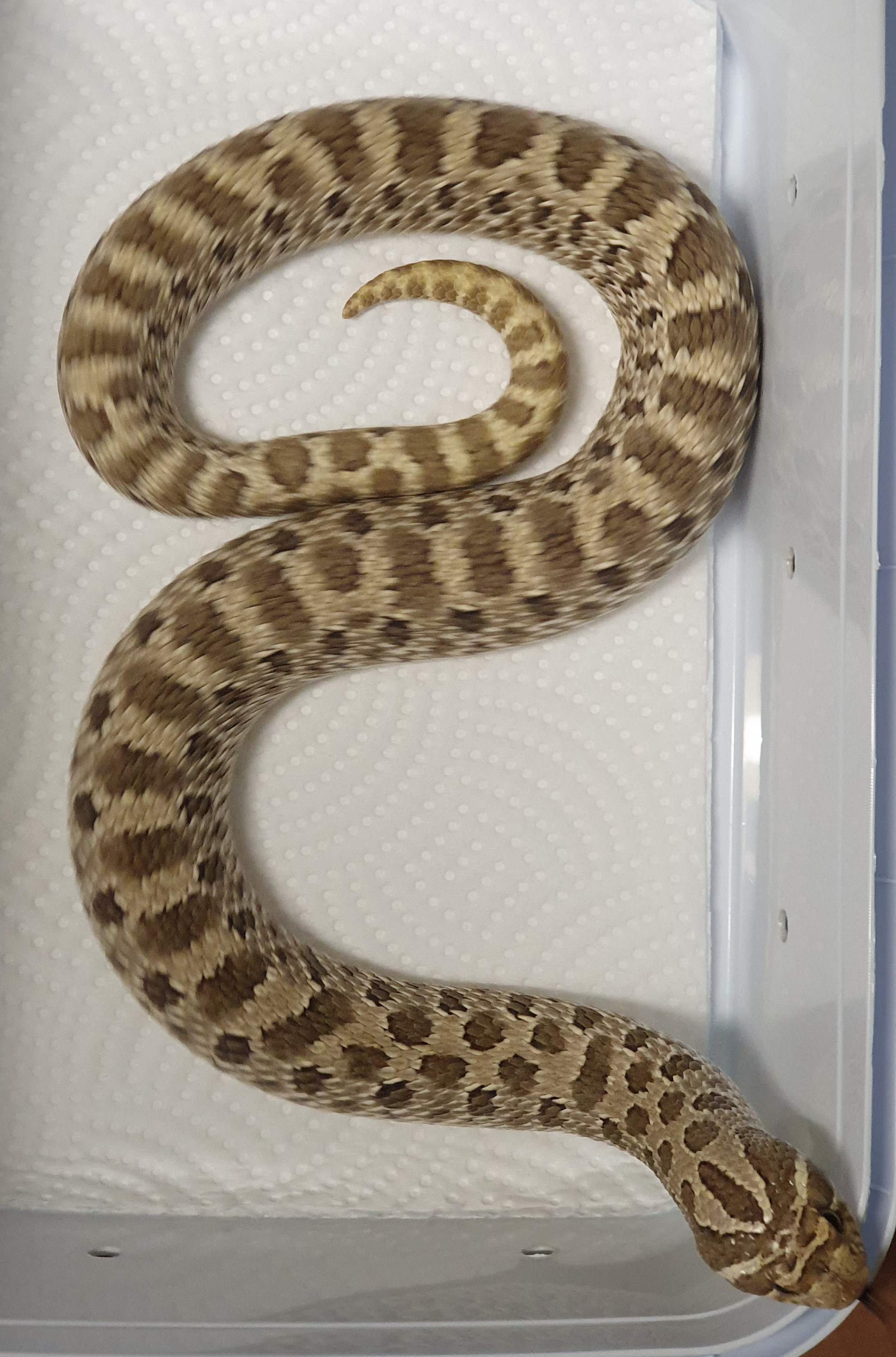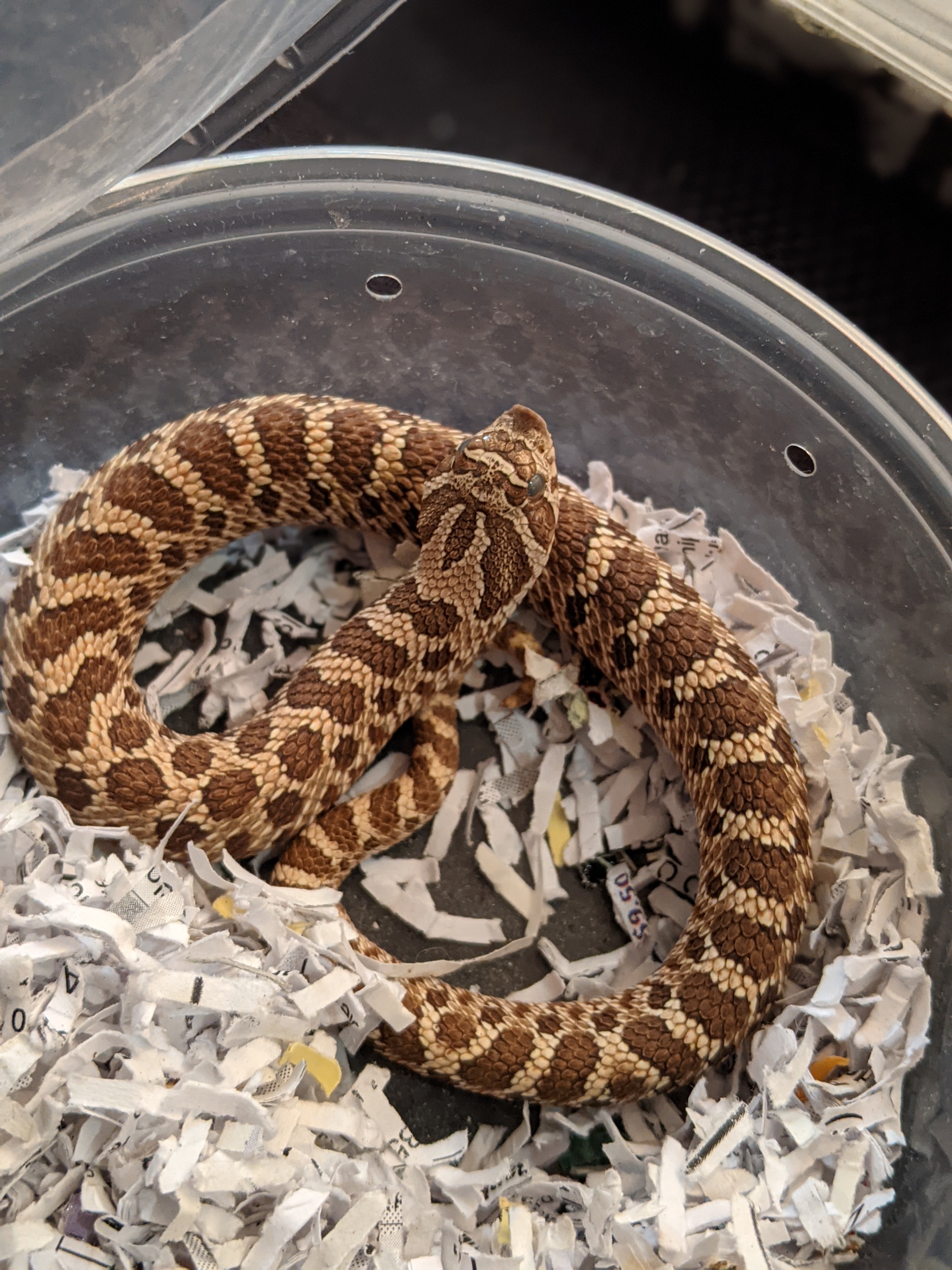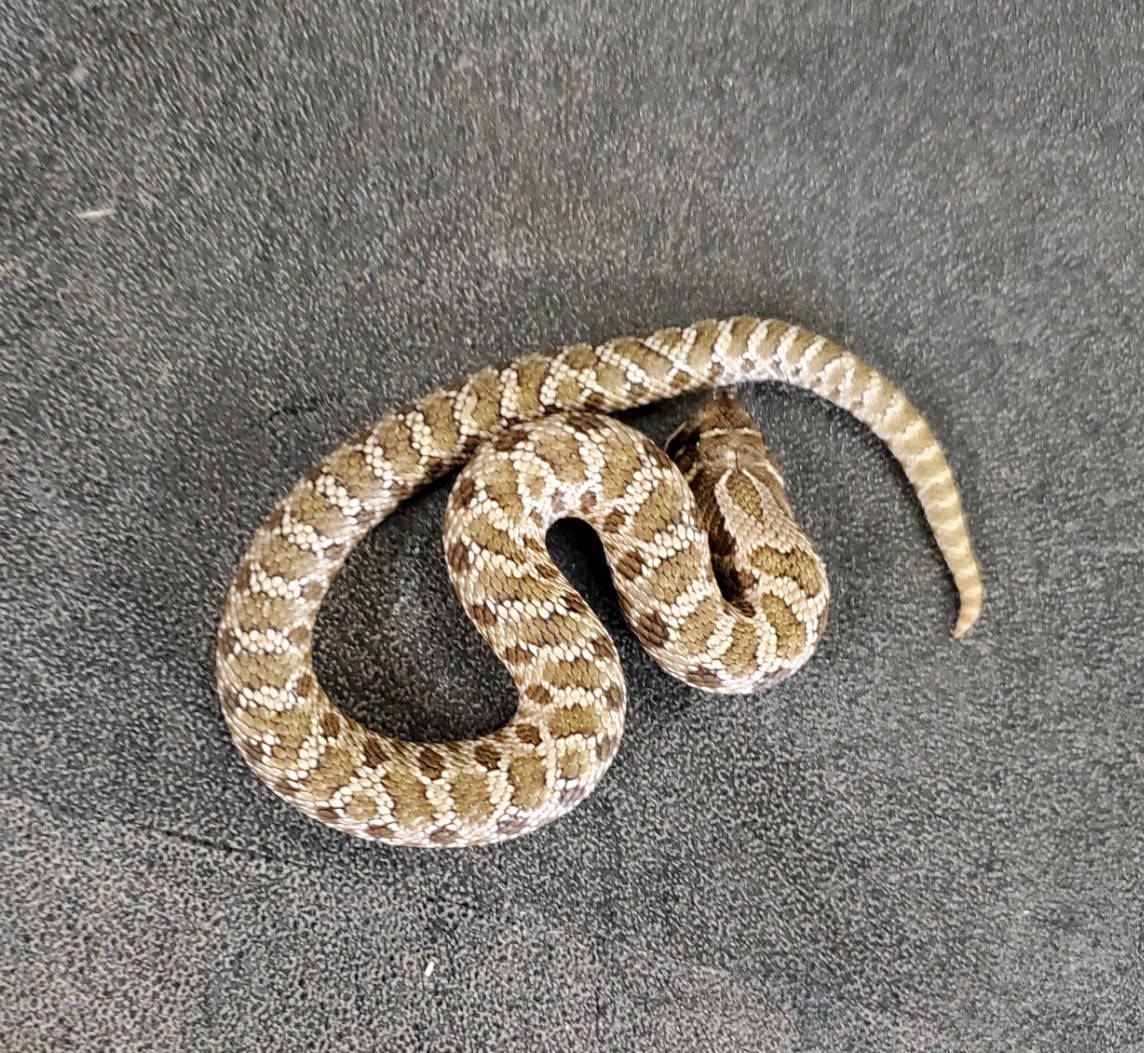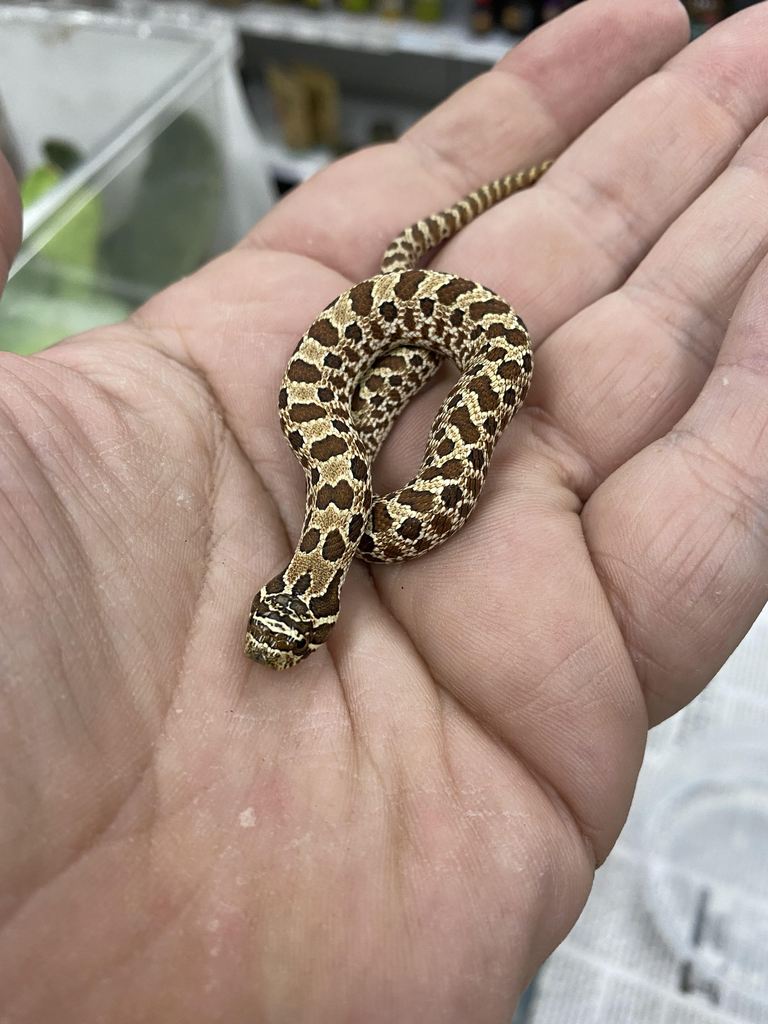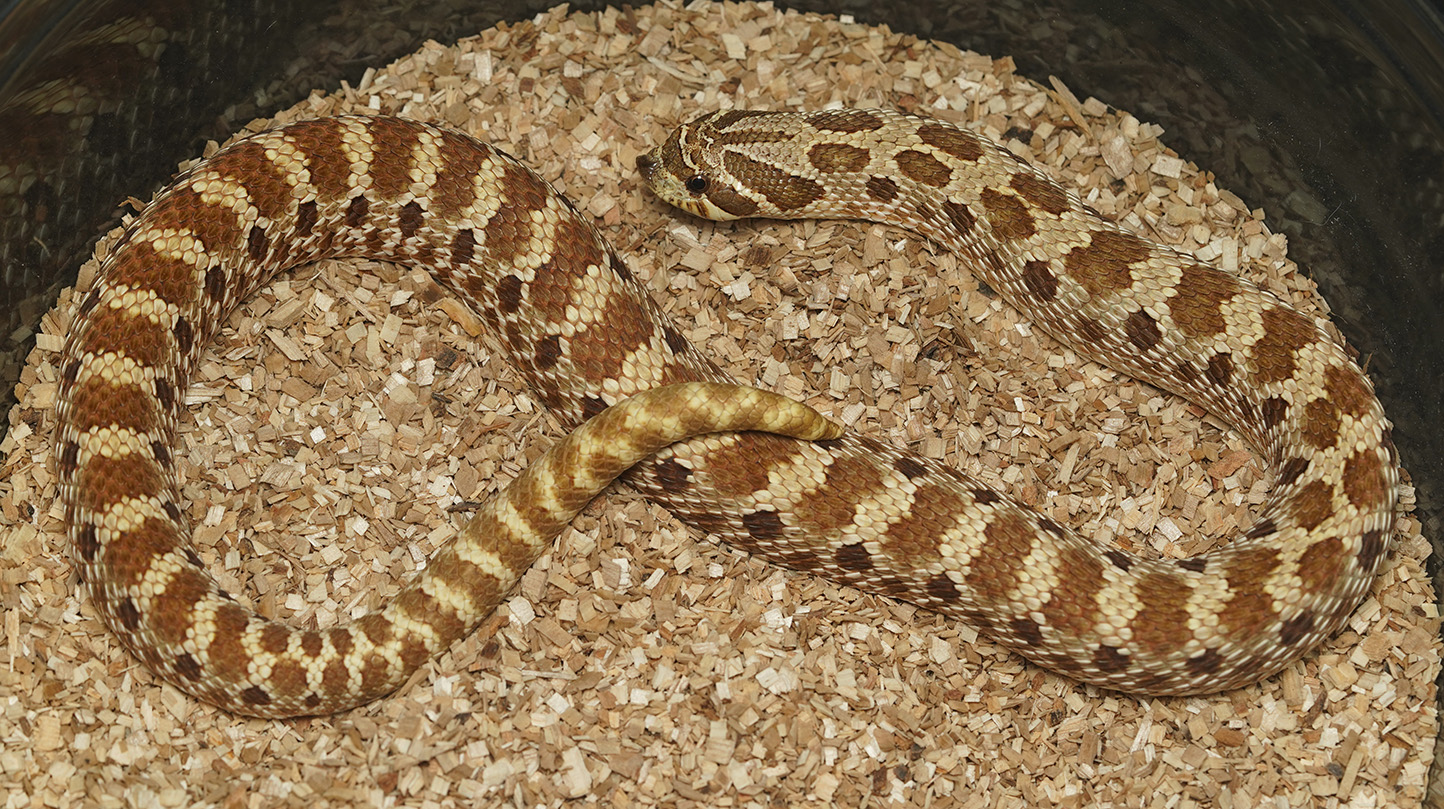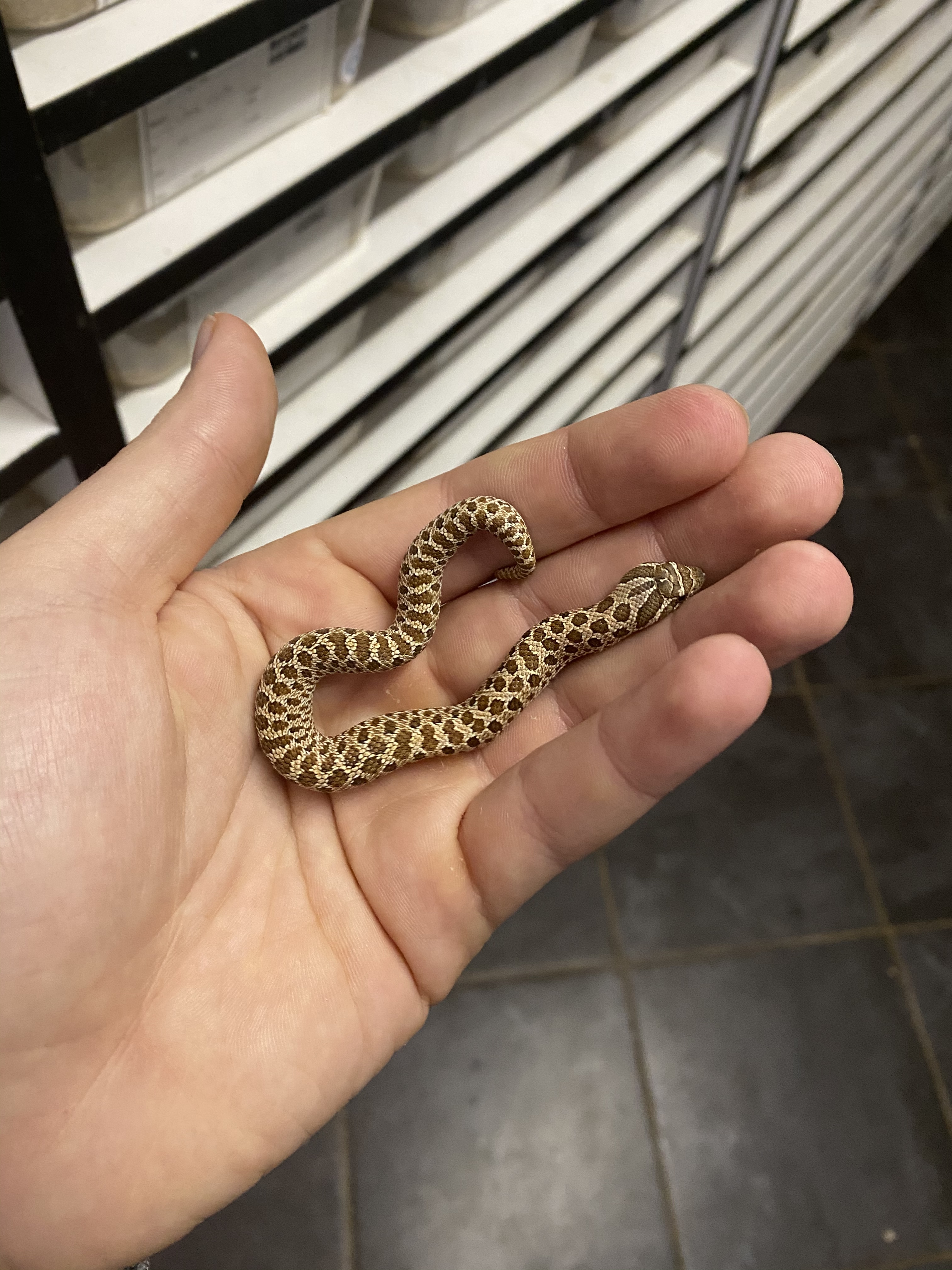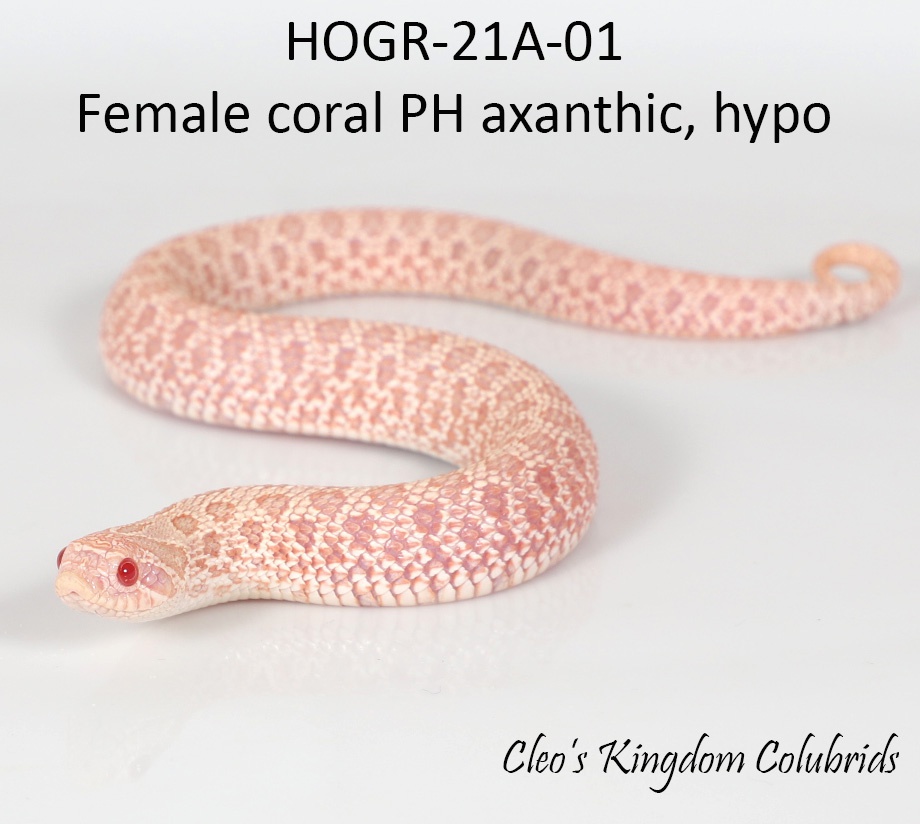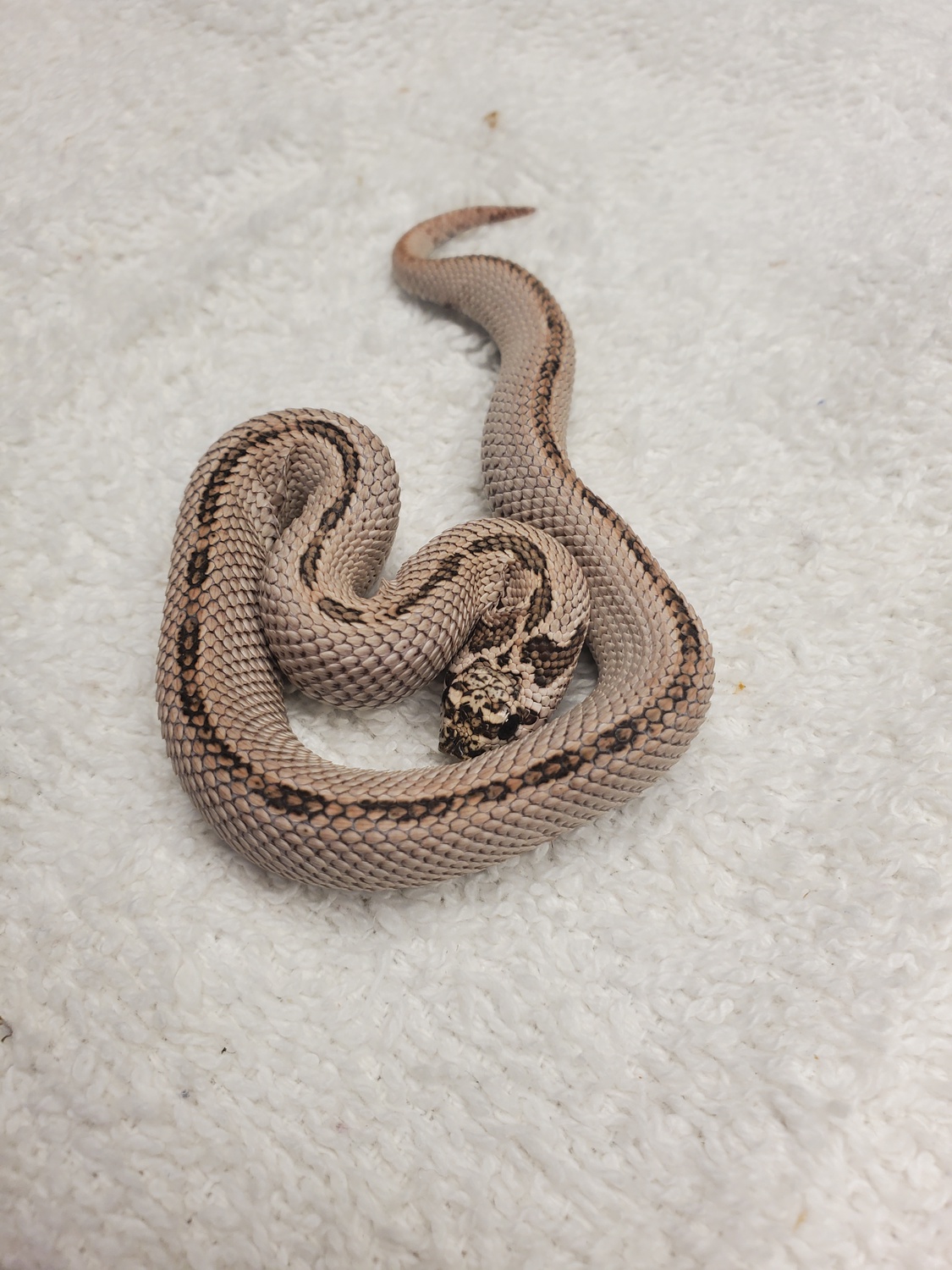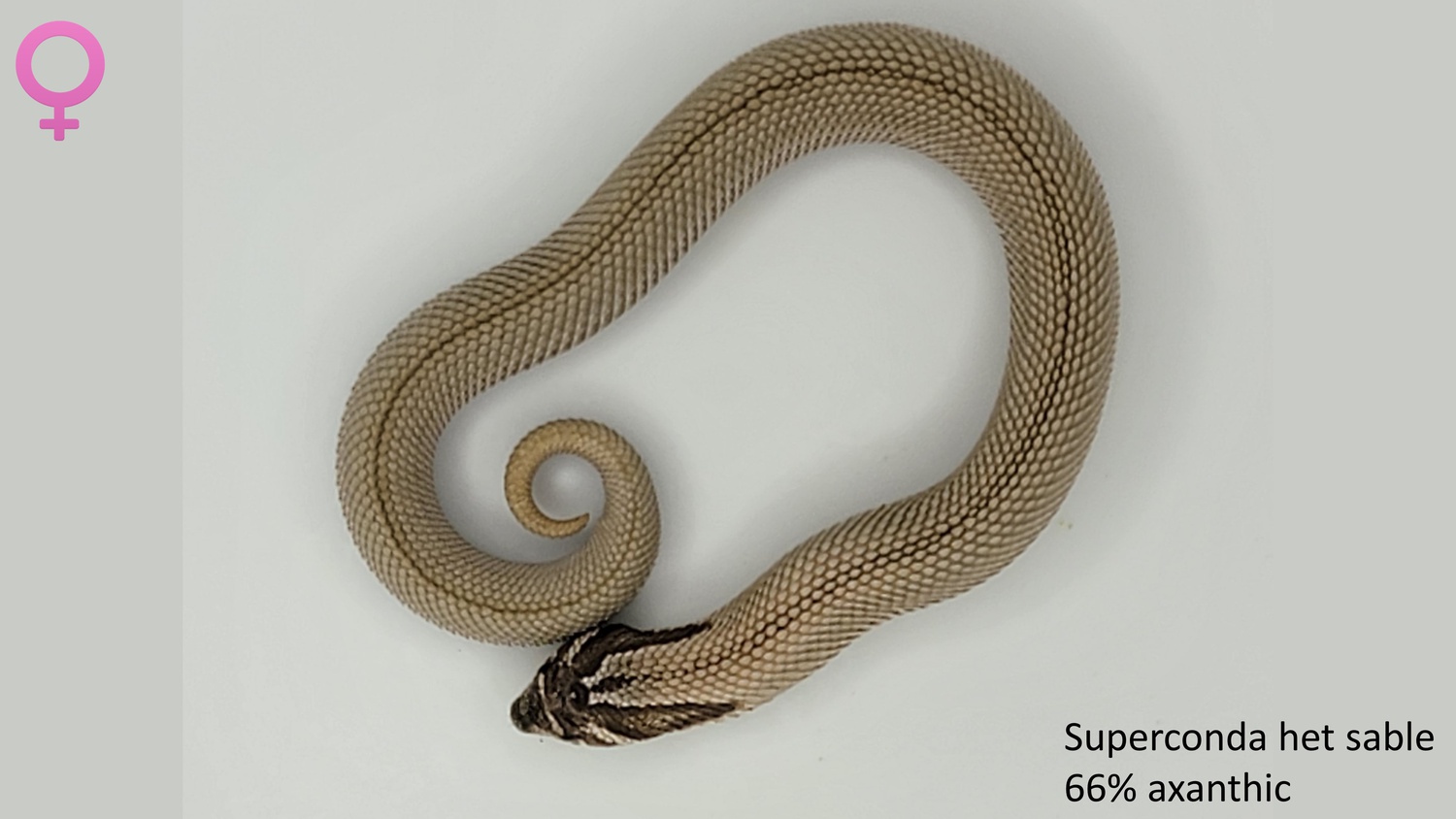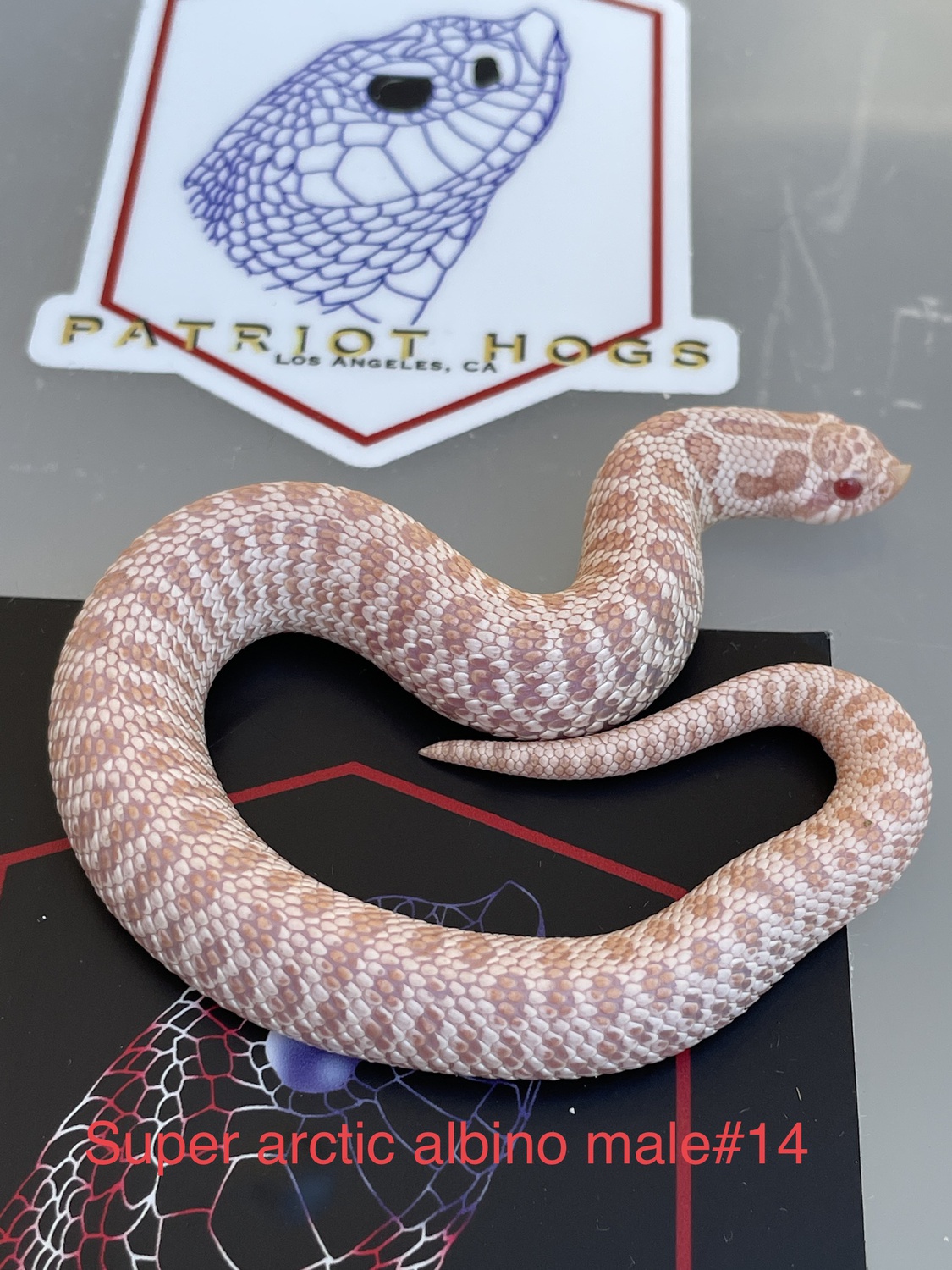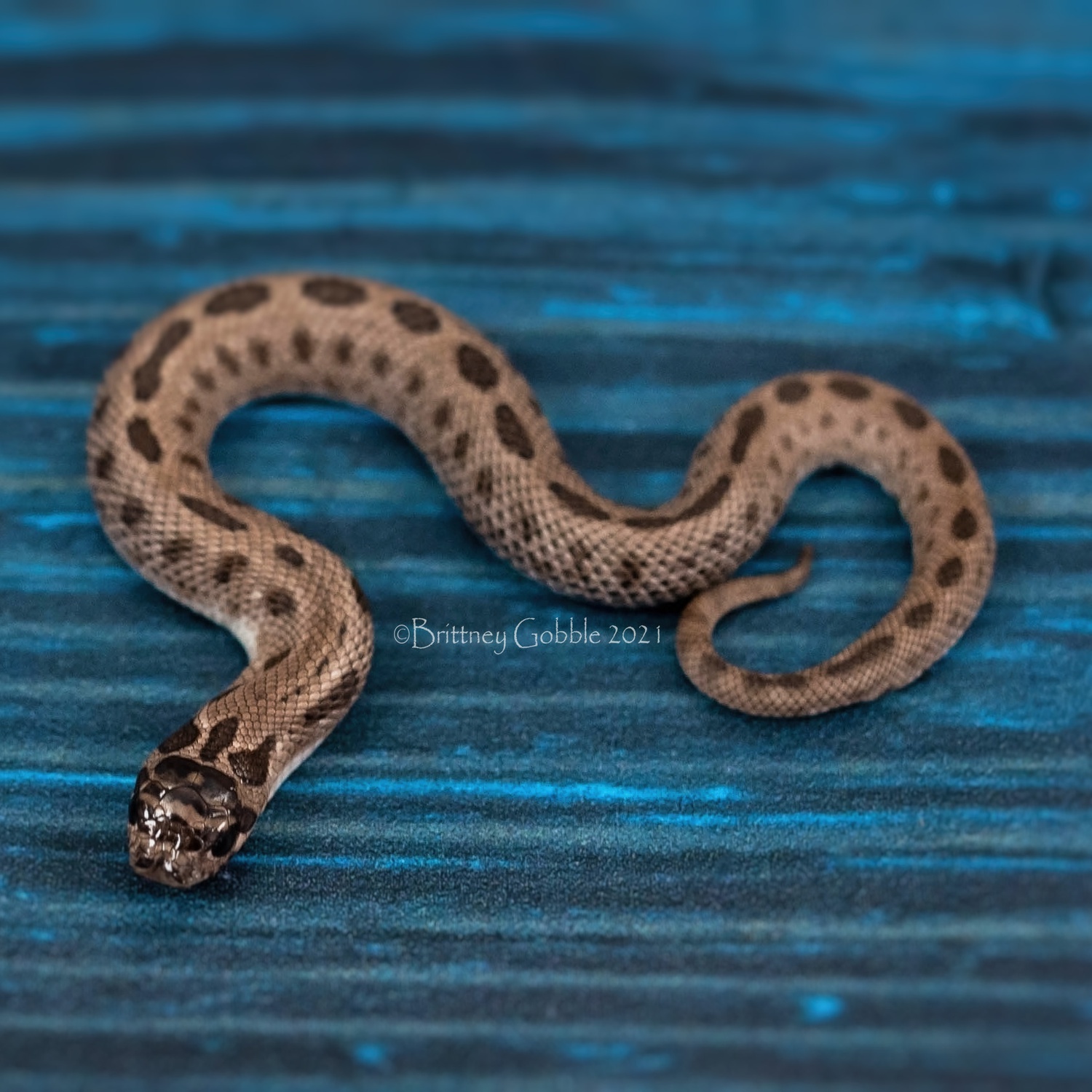Normal
Type: Other
Aliases: Wild, Classic, blow snake, bluffer, faux viper, plains hognose snake, prairie hognose snake, spoonbill snake, spreadhead snake, Texas hognose snake, Texas rooter, and western hognose snake.
Issues: N/A
Availability: Rarest
Last Updated: 2022-01-31
Do you have any suggestions or corrections for this article?
Click here to contribute feedback
About
Issues
Western Hognose have a tendency to display death feigning, where they roll onto their back and pretend to be dead.
History
No history yet
Appearance
Head
Body
The Western Hognose Snake is a relatively small, stout-bodied snake. Its color and pattern is highly variable between subspecies, although most specimens appear much like rattlesnakes to the untrained eye, which appears to be Batesian mimicry. Males are considerably smaller than females, with adults rarely exceeding a total length (including tail) of 40–50 cm (15–20 inches).
Tail
The tail follows the same patterning and coloration as the rest of the body but with tighter banding.
Controversy
The species is not dangerous to humans, but there exists scientific debate regarding whether the mild toxins in the hognose’s bite result from saliva, harmful to its preferred wild food source – toads – or an extremely mild venom produced in glands connecting to the hognose’s minuscule rear fangs. In either case, no deaths or systemic effects from the extremely rare bite from this rear-fanged snake have been recorded. Although bites may uncommonly be medically significant, the species is not regarded as venomous.
Although some local declines have been reported, the species H. nasicus is widespread, has a large overall population size (> 100,000), and is effectively protected by a variety of conservation programs. It is therefore currently classified as Least Concern by the IUCN. The Eastern Hognose Snake (Heterodon platirhinos) is classified as a threatened species in some regions of its range and is therefore protected under those states’ laws.
Proven Lines
No known proven lines.
Related Traits
Gloyd’s Hog-nosed Snake, Mexican Hog-nosed Snake, Plains Hog-nosed Snake.
